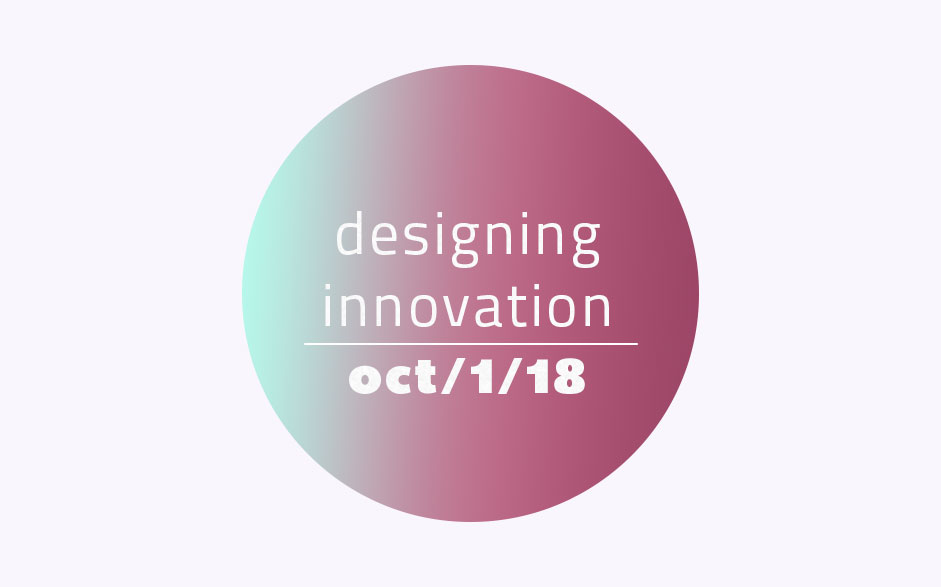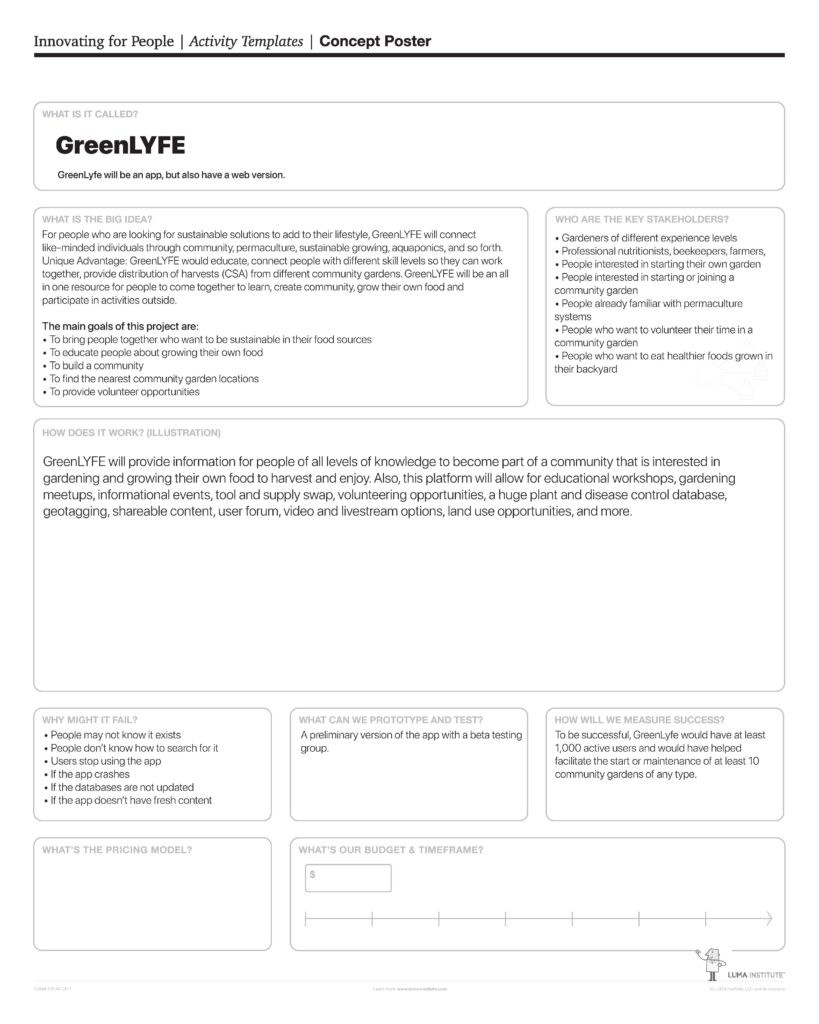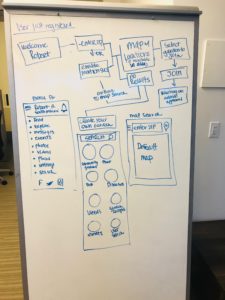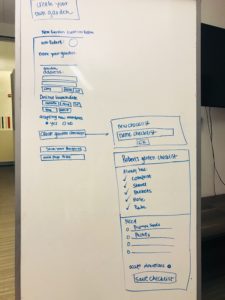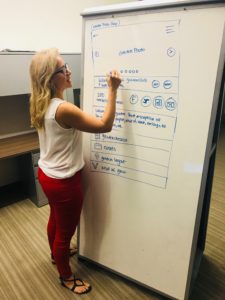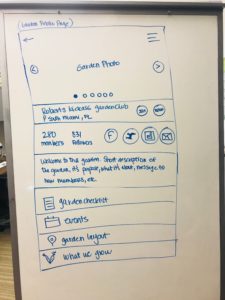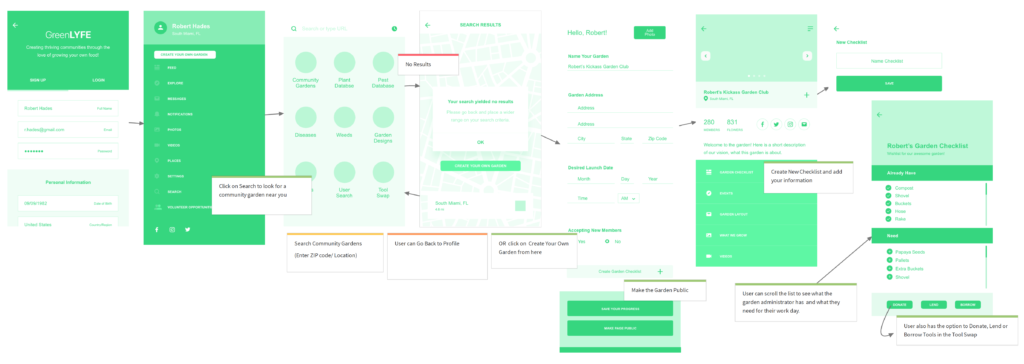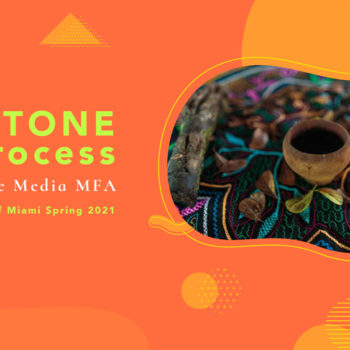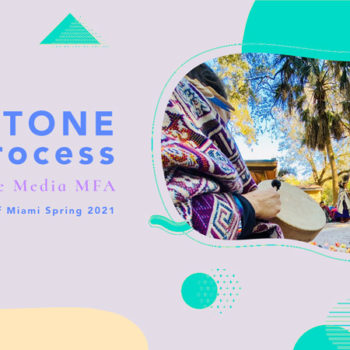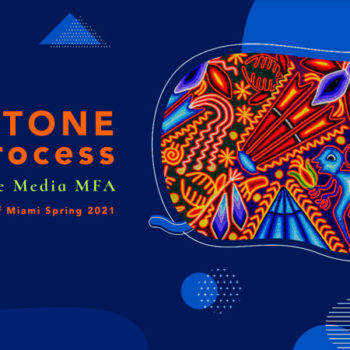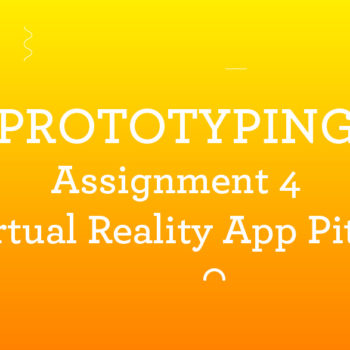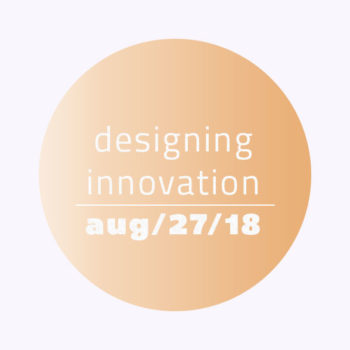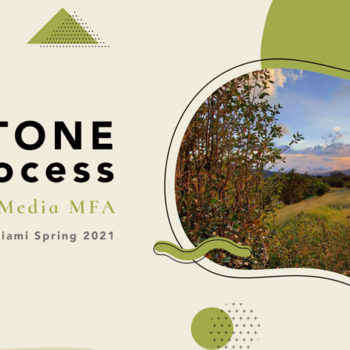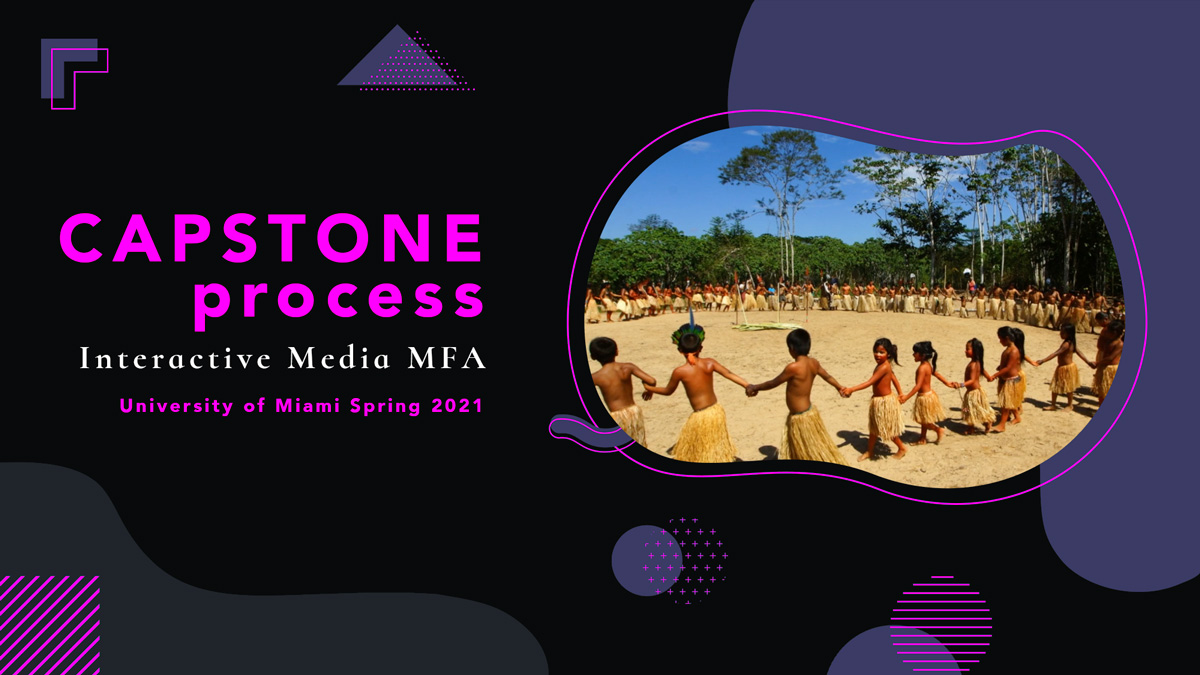GreenLYFE — Creating Community through Regenerative Systems
Purpose
Currently, information about sustainable food sources is spread out and there is not an “all-in-one” place to learn or communicate with like-minded individuals who are also interested in building community gardens and food forests through permaculture, aquaponics, and other methods. Besides, people are spending too much time on their phone to connect to others these days. Our second goal is building up a community to advocate people to communicate and meet face to face through these kinds of activities.
Objective
This platform is for people who are looking for sustainable solutions to add to their lifestyle, GreenLYFE will connect like-minded individuals through a community, permaculture, sustainable growing, aquaponics, and so forth. Unique Advantage: GreenLYFE would educate, connect people with different skill levels so they can work together, provide distribution of harvests (CSA) from different community gardens. GreenLYFE will be an all in one.
The main goals of this project are:
- Bring people together who want to be sustainable in their food sources
- Educate people about growing their own food
- Build a community
- Find the nearest community garden locations
- Provide volunteer opportunities
Summary of Research Findings
These are some of the findings we have after conducting stakeholder interviews:
Pros of Community Gardens and Food Forests:
- Connecting with neighbors in real life
- Offering a place for amateurs to learn from and communicate with experienced farmers
- Helping to feed low-income community members
- Helping the homeless by providing food, shelter, and education to those who choose to help themselves by helping the local community
- Creating an abundance of food in food deserts
- Connection to the earth
- Distribution of work among community members instead of one person
- Sharing knowledge
- Offering job opportunities
- Gives you something to do
Challenges:
- Physical space
- Lack of knowledge
- Overwhelmed with where to find information
- Weather
- Local ordinances and zoning
- Nosy or controlling neighbors
- Homeowners Association (HOA)
- Lack of materials, resources, and funding
- Initial investment when starting a food garden
- Budget
- Getting the word out through Social Media/marketing
- Shortage of support/volunteers
- Communication methods
App Features Wish List:
Interviewees felt the following features would benefit the app:
- Database for pests and common plant conditions
- Ability to input fruit trees and edible plant identification in your city
- Grow charts for different zones
- Information on companion plants
- Ability to find a nearby garden or fellow gardeners
- Ability to schedule tasks so people can coordinate garden care/maintenance
- Event Notifications
- Ability to message other users and plan a meetup
- Educational courses about gardening, nutrition, etc
- Workshop schedules
- Tool and materials swap
- Ask the Experts option
- Competition about gardening
- Online gardening socializing games
- Volunteer/job opportunities
Audience
- Gardeners of different experience levels
- Professional nutritionists, beekeepers, farmers
- People interested in starting their own garden
- People interested in starting or joining a community garden
- People already familiar with permaculture systems
- People who want to volunteer their time in a community garden
- People who want to eat healthier foods grown in their backyard
Concept Poster
User Scenarios (Context Scenarios)
Scenarios or stories about the ideal user experiences explain how the product fits into each persona’s life and environment, and how it helps them achieve their goals. You should have at least a couple scenarios for each persona.
Scenario 1 Creating a New Community Garden
- Robert on phone looking for gardens in his area using GPS Locator
- He doesn’t find any so he starts his own garden (START YOUR OWN button)
- Robert receives MESSAGES from interested members
- He creates a CHECKLIST of what they need to start (supplies, seeds, etc)
- He also creates a list of TASKS for each member to complete.
- CREATE AN EVENT to launch the garden.
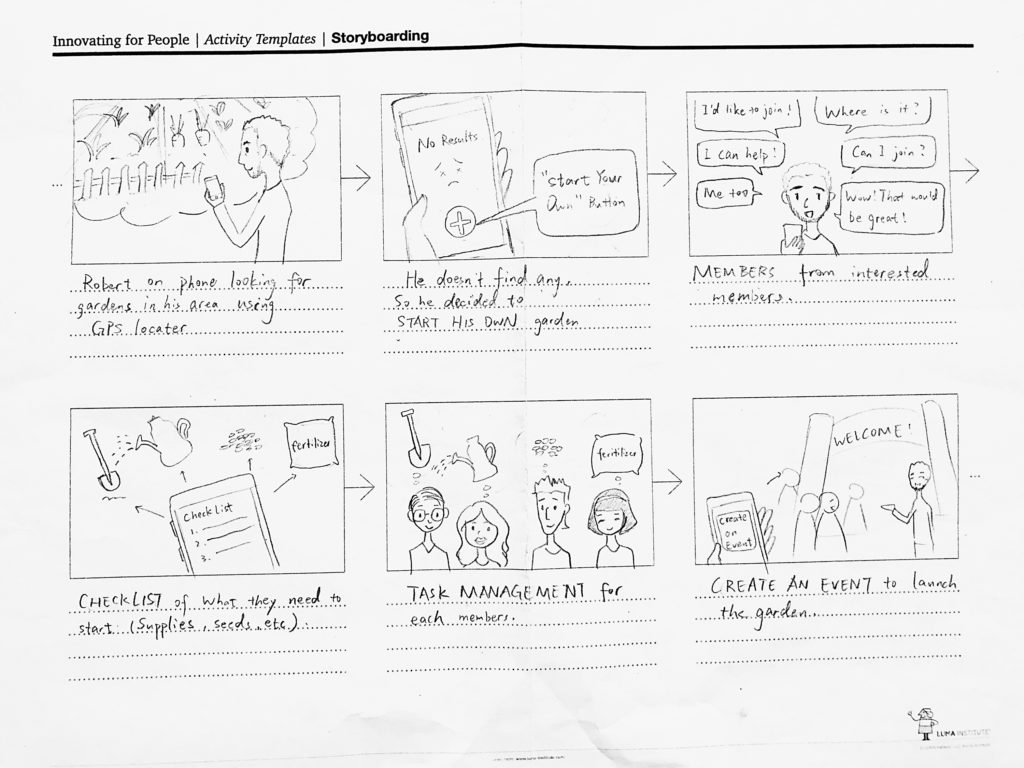
Scenario 2 Plant Identifier
- Jane receives plant from her mom.
- Uses PLANT IDENTIFIER to find out what it is and how to care for it.
- She uploads and share a picture of it with the other users
- A user points out in a comment that her plant has spots and bugs
- She uses the search function in the DISEASE AND PEST ENCYCLOPEDIAS to find proper care for the issue
- Jane creates a reminder to water and feed her plant proper nutrients.
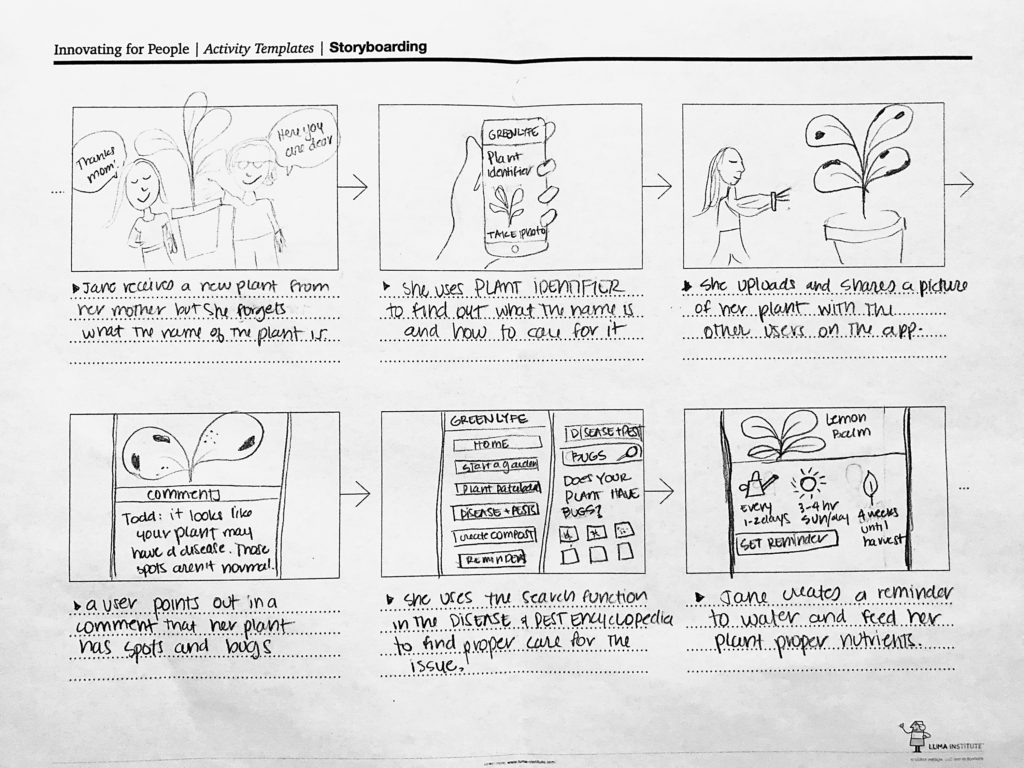
Scenario 3 Volunteering Opportunity
- Sharon has a lot of free time and uses the GPS function to find local volunteer opportunities
- She finds a local permaculture garden in need of volunteers
- She marks herself on the app as an interested volunteer
- She marks on the app that she is an expert in permaculture and available to give workshops
- She receives a message from the group saying she has been accepted and sees the garden’s wishlist
- She marks off supplies that she can donate to the garden
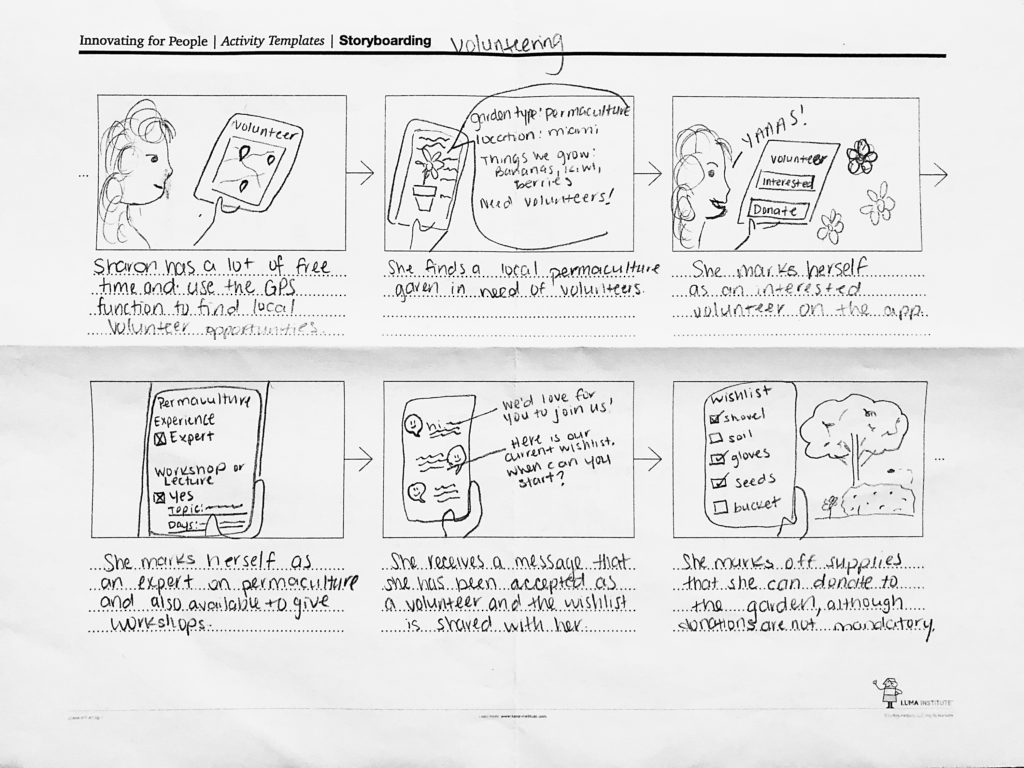
USER FLOW
User Flow • Home Page – Search Page Checklist Nicole sketching Community Garden Page
Requirements (Design Considerations)
Some of the Requirements are:
- User Registration
- GPS availability
- News Feed
- Explore Feed
- Messaging Capabilities
- Notifications
- Videos
- Add New Garden Locations
- Add New Members
- Add Checklists
- Add Photos
- Shareable Content
- Tool Swap
- Event Creation
- Plant Database
- Disease Database
- Weed Database
- User Search
- Volunteer Opportunities
- Design Ideas

